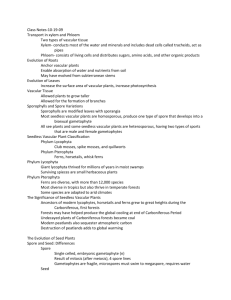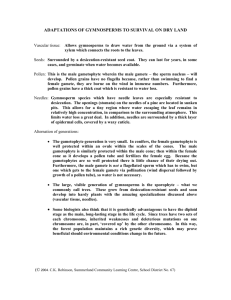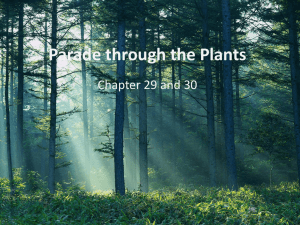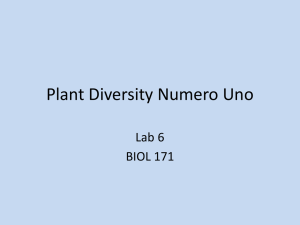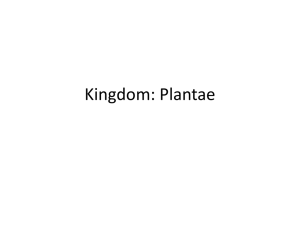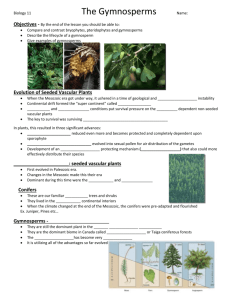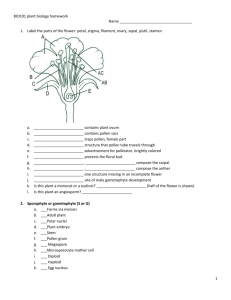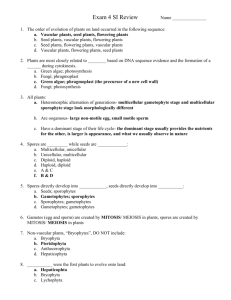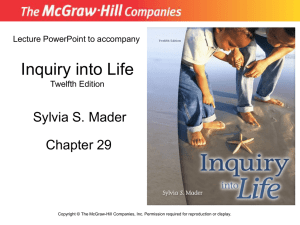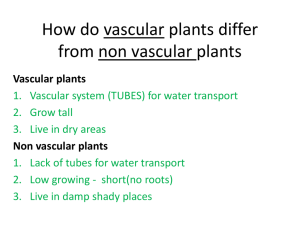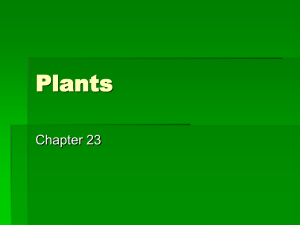KEY
advertisement
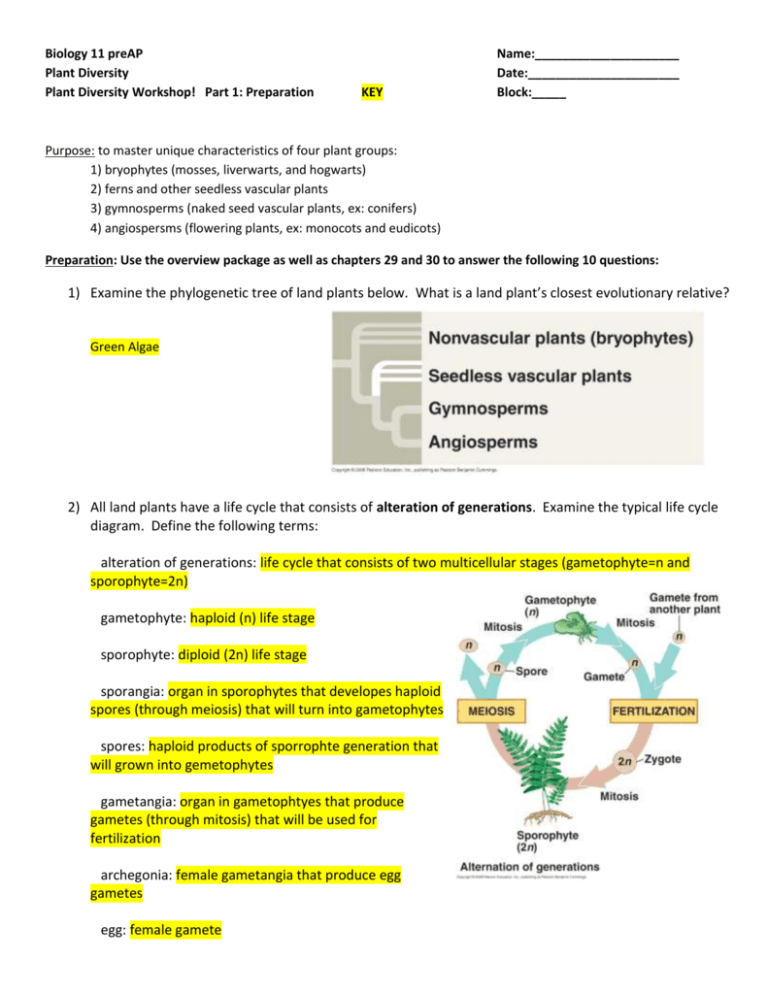
Biology 11 preAP Plant Diversity Plant Diversity Workshop! Part 1: Preparation KEY Name:_____________________ Date:______________________ Block:_____ Purpose: to master unique characteristics of four plant groups: 1) bryophytes (mosses, liverwarts, and hogwarts) 2) ferns and other seedless vascular plants 3) gymnosperms (naked seed vascular plants, ex: conifers) 4) angiospersms (flowering plants, ex: monocots and eudicots) Preparation: Use the overview package as well as chapters 29 and 30 to answer the following 10 questions: 1) Examine the phylogenetic tree of land plants below. What is a land plant’s closest evolutionary relative? Green Algae 2) All land plants have a life cycle that consists of alteration of generations. Examine the typical life cycle diagram. Define the following terms: alteration of generations: life cycle that consists of two multicellular stages (gametophyte=n and sporophyte=2n) gametophyte: haploid (n) life stage sporophyte: diploid (2n) life stage sporangia: organ in sporophytes that developes haploid spores (through meiosis) that will turn into gametophytes spores: haploid products of sporrophte generation that will grown into gemetophytes gametangia: organ in gametophtyes that produce gametes (through mitosis) that will be used for fertilization archegonia: female gametangia that produce egg gametes egg: female gamete antheridia: male gametangia that produce sperm sperm: male gametes 3) What is the difference between a nonvascular plant and a vascular plant? Vaslular plant has no xylem or phloem tissue (tissue that transport water and sugars through a plant) whereas vascular plants have complex xylem and phloem tissue that can transport water and sugars through the plant. (Therefore the vascular plant can get much larger.) 4) What life stage dominates in bryophytes (mosses)? What life stage dominates in ferns and other seedless plants? Dominant stage in mosses = gametophyte (n) Dominant stage in ferns – sporophyte (2n) 5) What are the two groups of seed plants? Examples? Gymnosperms – vascular plants with naked seeds ex: conifers such as a cedar tree Angiosperms – vascular plants that produce flowers and fruit ex: rose bush, wheat grass, apple tree 6) Explain the adaptation of reduced gametophytes. Protection! – increases reproductive success 7) What is heterospory? Include the terms megaspores and microspores in your explanation. Heterospory = the production of two types of spores: megaspores which produce female gametophytes and microspores which produce male gametophytes. 8) Describe what is in the ovule and what is in the pollen. Why was the evolution of pollen a key adaptation to land? Ovule: meagasporangium, megaspore and growing female gametophyte, protective tissue, and developing egg gamete Pollen: male gametophyte – contains two sperm nuclei Pollen key to life on land because it can be transferred without water! 9) What is the difference between a seed and a spore? What are the advantages of a seed? seed develops from fertilization and will develop into sporophyte, spore is from meiosis and will develop into gametophyte seed: multicellular with several layers of tissue that protect the embryo. 10) Examine the diagram of a flower. Define the following terms: flower: reproductive plant organ that contains the sepals, petals, stamens, and carpels stamen: male reproductive structure that produces microspores in the anthers (which develop into pollen grains) carpels: female reproductive structure that produces megaspores (which produce female gametophytes with eggs) fruits: mature ovaries of the plant that develops after fertilization Comparison of Important Characteristics of Land Plants Features Mosses Ferns Gymnosperns Angiosperms Gametophyte Sporophte Sporophte Sporophte Yes! (sperm) Yes! (sperm) No (sperm contained in pollen) No (sperm contained in pollen) nonvascular vascular vascular vascular Homosporous (gametophyte has both antheridia to produce sperm and archegonia to produce eggs) Homosporous (gametophyte has both antheridia to produce sperm and archegonia to produce eggs) Heterosporous (ovulate cone produces female gametophyte, pollen cone produces male male gametophytes) Heterosporous (flower has anther, which produces male gametophyte and ovary, which produces female Diagram/Sketch Gametophyte or sporophyte dominant? Is water required for fertilization? Vascular or nonvascular tissue? Homosporous or heterosporous? gametophyte) Seeds? no no yes yes no no yes yes no no no yes Club mosses Lady ferns Pine Trees Lilies Pollen grains? Fruit? Examples:

